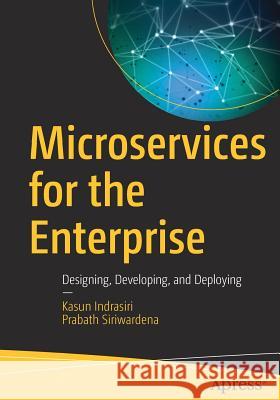Microservices for the Enterprise: Designing, Developing, and Deploying » książka
topmenu
Microservices for the Enterprise: Designing, Developing, and Deploying
ISBN-13: 9781484238578 / Angielski / Miękka / 2018 / 422 str.
Kategorie:
Kategorie BISAC:
Wydawca:
Apress
Język:
Angielski
ISBN-13:
9781484238578
Rok wydania:
2018
Ilość stron:
422
Waga:
0.76 kg
Wymiary:
25.4 x 17.78 x 2.29
Oprawa:
Miękka
Wolumenów:
01
Dodatkowe informacje:
Wydanie ilustrowane











